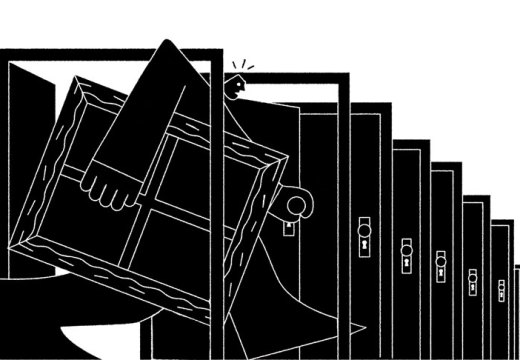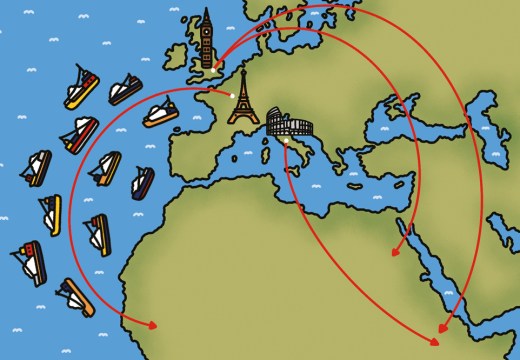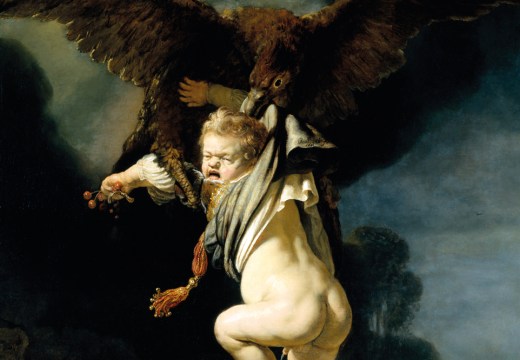The following is an amended version of an article originally published in the October 2019 issue of Apollo. It has been updated to reflect changes to the UK law.
It has been estimated that at least £100bn is laundered through the UK financial system every year. That is twice the size of Panama’s whole economy.
In July 2018 the 5th Anti-Money Laundering Directive (MLD5) was adopted by the EU as part of the Juncker Commission’s response to the terrorist attacks in Paris in 2015 and Brussels in 2016, the Panama Papers scandal, and increased scrutiny of free ports following the Yves Bouvier affair. The UK has until 10 January 2020 to transpose MLD5 into national law.
On Parliament’s last working day before Christmas, new legislation was passed in order to bring MLD5 into UK law by amending various statutes including the Money Laundering Regulations 2017 (MLRs) and the Proceeds of Crime Act 2002 (POCA), the two main UK acts dealing with anti-money laundering (AML). These changes come into force on 10 January. From that date, the vast majority of art traders and art intermediaries carrying out business in the UK will become subject to strict anti-money laundering obligations. The impact on such art-market participants is likely to be significant. A senior auction-house lawyer has predicted that this will be the biggest legal change ever to affect the UK art market.
Money laundering can take many forms, as funds derived from criminal activities are passed through corporate entities, businesses, bank accounts and/or assets in order to disguise their true origins. In the art sector examples might include a criminal exchanging ‘tainted’ funds for high-value assets that are then returned to the dealer, with ‘clean’ funds refunded, or simply buying an artwork with the proceeds of crime at a very high price and then anonymously selling it to a third party (possibly at an undervalue). Another example might involve borrowing ‘clean’ money using art purchased with proceeds of crime as collateral.
It is said that the art sector could be fertile ground for money laundering due to the extremely high value of some artworks, their inherent portability, and the secrecy that is customary in the industry. Use of art agents and intermediaries, offshore companies and free ports can lend itself to the creation and preservation of secrecy. This secrecy can of course be for entirely legitimate reasons. However, it is also helpful to those who have more nefarious intentions – which seems to be how the European Commission saw it after the leak of the Panama Papers.
The three primary money laundering offences in the UK are set out in the POCA, and, very broadly, they are committed by anyone who knows or suspects that they are or may be involved with the transfer or acquisition of criminal property, or that they are facilitating such an arrangement. Therefore, under this law, if a dealer does not know or suspect at the time (on a subjective basis) that they are involved in an arrangement involving proceeds of crime, they are unlikely to be found guilty of a money-laundering offence (albeit they may not deliberately ‘turn a blind eye’).
The MLRs impose certain additional practical obligations upon those deemed to be part of the ‘regulated sector’. Prior to 10 January, high-value dealers (those art dealers accepting cash payments above a certain value) have been the only art-market players within the regulated sector.
From 10 January, the regulatory net will widen considerably to include certain art-market participants who will become part of the ‘regulated sector’ irrespective of payment method accepted. These are defined in the new legislation as any firm or sole practitioner who ‘by way of business trades in, or acts as an intermediary in the sale or purchase of, works of art’ or who ‘is the operator of a free port when it, or any other firm or sole practitioner, by way of business stores works of art in the free port’. In each case there is a threshold for applicability, where the value of the art stored, or the transaction (or a series of linked transactions), amounts to €10,000 or more. The definition of ‘works of art’ borrows from section 21 of the Value Added Tax Act 1994, appearing to exclude certain collectors’ items and antiques.
Art-market participants carrying out business in the UK will be required to have certain systems and controls in place to combat money laundering and terrorist financing; failure to comply with these requirements could carry a penalty of two years’ imprisonment, a fine, or both. The systems and controls required include: undertaking an internal risk assessment and creating an internal AML policy; undertaking initial and ongoing client due diligence (CDD); documenting CDD carefully and maintaining records; training staff; and appointing a nominated officer to make reports to the National Crime Agency.
Broadly speaking, CDD means identifying clients (including beneficial owners of corporate clients) and verifying those identities using independent documentation. Additionally, it means that regulated businesses must form an understanding of the source of funds and the transaction (which includes understanding who all the parties to the transaction are, determining whether the whole transaction makes sense or whether there are elements of it that the dealer is not aware of, and understanding things that do not immediately add up, such as circular transactions or transactions at an under- or overvalue). CDD is conducted on a risk-based analysis (considering the overall risk profile of the business, the client, and the particular transaction) and should typically be carried out prior to carrying out the transaction. Dealers will need to give thought as to how to manage their CDD in various scenarios: how, for example, will they respond to a new client wishing to make an impulse purchase at an art fair?
POCA contains additional offences applicable to those in the regulated sector, which will also now become relevant to art-market participants. Most notably, if a person working in a business in the regulated sector knows or suspects or has reasonable grounds for knowing or suspecting that another person is engaged in money laundering and fails to disclose that to the National Crime Agency, then they can be held to have committed a crime. (This failure to disclose offence could attract five years in prison and/or a fine.) This offence includes an objective test (i.e. whether a reasonable person would have concluded that there are reasonable grounds for knowing or suspecting that the arrangements concern proceeds of crime). Ignorance is no defence.
At this time, the government’s response to its consultation on the implementation of MLD5 is still awaited. We are told it will be published soon, but it now appears that the views of the art industry will not be taken on board to help refine the rules before implementation from 10 January.
There remain many questions as to what these new laws will mean for art-market participants on a practical basis. One of the key issues will be how they are to deal with CDD on ultimate clients. If an art agent comes to a newly regulated dealer to buy a valuable artwork, that dealer must do CDD on that agent. However, if the dealer has reason to think that the agent must be buying on behalf of another person (the agent’s principal) because that agent would be unlikely to have the funds to buy the artwork on their own account, what does the newly regulated dealer do about undertaking CDD on that ultimate client? Will the dealer be able to rely on the fact that the agent will also be regulated and therefore should be doing their own CDD on their principal, or must the dealer conduct CDD on the agent’s principal too? The dealer will likely need to understand the source of funds, the transaction and the identity of the principal, but how can the dealer go about that when the agent will wish to keep the identity of their client secret so that they do not get cut out of the transaction?
Another key question is whether an ‘intermediary’ includes those involved in art transactions who do not pay or receive any of the sales proceeds.
It appears from an explanatory memorandum to the new legislation that HMRC’s existing guidance for high-value dealers may be updated to incorporate changes in relation to art-market participants, and that separate guidance will also be available through the British Art Market Federation (which has been an active player in the consultation process). The publication of this guidance will be eagerly awaited by the industry.
Importantly, it is not yet known whether HMRC, the supervisory body for the newly regulated art-market participants, will operate a transition (or ‘grace’) period for relevant parties to become compliant. Auction houses, art dealers, agents and other art intermediaries would be well advised to take immediate action to put in place systems and controls and adopt comprehensive AML policies.
Putting in place the requisite systems and controls, and then complying with CDD and reporting obligations on an ongoing basis, may be burdensome for the industry, particularly since all art-market participants are regulated in the same way regardless of size. However, as with other regulated industries, the imposition of regulation may be the precursor to a culture change across the sector.
For those who already conduct due diligence on provenance and title, the new compulsory CDD checks should constitute a formalisation and natural extension of current practices. Making appropriate enquiries and keeping records should mean that dealers are better able to avoid committing money laundering offences and do not inadvertently assist criminals in their money-laundering endeavours. In addition to the potential legal risk and reputational damage associated with such unwitting assistance, the moral arguments for rooting out serious organised crime – the social and economic costs of which are said to cost the UK in excess of £37bn pounds each year – are profound.
The contents of this article are not legal advice and cannot be relied upon as such. Specific legal advice should be sought on a case by case basis.
Sarah Barker is Partner and Head of the Art Group at the law firm Lee & Thompson LLP.
Unlimited access from just $16 every 3 months
Subscribe to get unlimited and exclusive access to the top art stories, interviews and exhibition reviews.














![Masterpiece [Re]discovery 2022. Photo: Ben Fisher Photography, courtesy of Masterpiece London](http://www.apollo-magazine.com/wp-content/uploads/2022/07/MPL2022_4263.jpg)
Has the Fitzwilliam lost the hang of things?